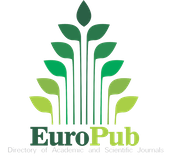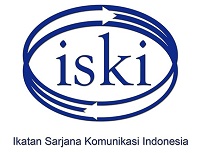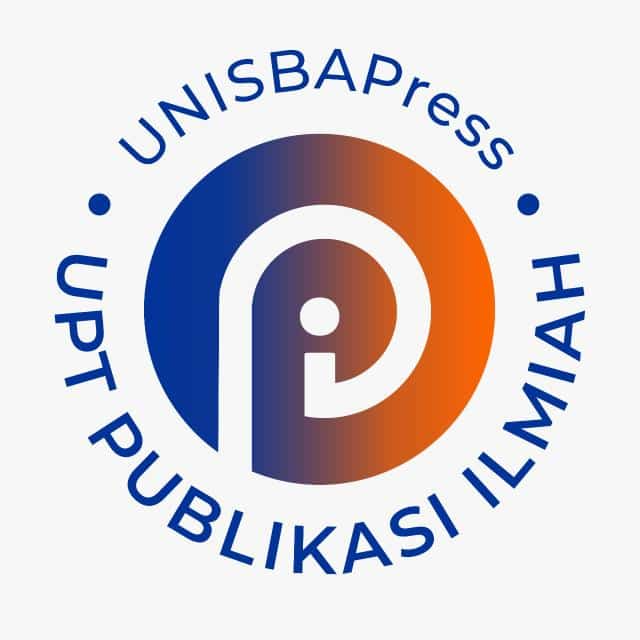The Use of Instagram for Promoting Private Higher Education In Jakarta Indonesia
DOI:
https://doi.org/10.29313/mediator.v16i1.2166Keywords:
social media, instagram, promotion, private university, uhamkatvAbstract
Social media is used by various organizations, including private universities, for various promotional activities. Muhammadiyah University Prof. Dr. HAMKA (UHAMKA) as one of the largest universities in Jakarta Indonesia uses social media to share various kinds of information. This paper analyzes the use of Instagram in promoting private universities. This study uses a qualitative approach, supplemented by content analysis based on big data, accompanied by in- depth interviews with members of the UHAMKA Bureau of Promotion and New Student Admissions who are responsible for managing promotional content on the @uhamkatv Instagram account. The findings reveal that there are several factors that have a significant influence on the performance of Instagram content, namely (1) post type: according to Virol’s application analysis, images tend to perform better than videos in terms of engagement and reach. ; (2) format: albums tend to perform better than other formats, such as stories or reels; (3) the theme has a significant impact on engagement; (4) emotion: content that makes people feel happy, inspired, or entertained is usually better than other types of content; and (5) consistency: consistent posting frequency and timing are critical to maintaining audience interest and expanding its reach.
References
Agung. (2019). Opportunities and Challenges of Instagram Algorithm in Improving Competitive Advantage. International Journal of Innovative Science and Research Technology, 4(1), 744–745. www.ijisrt.com743
Anas, N. (2022). Qualitative Research Paper Guidelines. International Journal of Management, Social Sciences, Peace and Conflict Studies, 5(June), 89–93
Appel, G., Grewal, L., Hadi, R., & Stephen, A. T. (2020). The future of social media in marketing. Journal of the Academy of Marketing Science, 48(1), 79–95. https://doi.org/10.1007/s11747-019-00695-1
Arrigo, E. (2018). Social media marketing in luxury brands: A systematic literature review and implications for management research. Management Research Review, 41(6), 657–679. https://doi.org/10.1108/MRR-04-2017-0134
Bahga, A., & Vijay, M. (2019). Big Data Science & Analytics. In Arshdeep Bahga & Vijay Madisetty.
Bond, M., Marín, V. I., Dolch, C., Bedenlier, S., & Zawacki-Richter, O. (2018). Digital transformation in German higher education: student and teacher perceptions and digital media usage. International Journal of Educational Technology in Higher Education, 15(1), 1–20. https://doi.org/10.1186/s41239-018-0130-1
Camilleri, M. (2020). Higher education marketing communications in the digital era. Strategic Marketing of Higher Education in Africa, 79–95. https://doi.org/10.4324/9780429320934-7
Chen, S. C., & Lin, C. P. (2019). Understanding the effect of social media marketing activities: The mediation of social identification, perceived value, and satisfaction. Technological Forecasting and Social Change, 140(July 2018), 22–32. https://doi.org/10.1016/j.techfore.2018.11.025
Corea, F. (2019). An Introduction to Data. Everything You Need to Know About AI, Big Data and Data Science
del Rocío Bonilla, M., Perea, E., del Olmo, J. L., & Corrons, A. (2020). Insights into user engagement on social media. Case study of a higher education institution.Journal of Marketing for Higher Education, 30(1), 145–160. https://doi.org/10.1080/08841241.2019.1693475
Egan, J. (2020). Marketing Communication third edition. New Delhi: Sage Publications India Pvt Ltd.
Freberg, K. (2020). Social Media for Strategic Communication: Creative Strategies and Research. In Journal of Public Relations Education (Vol. 6, Issue 2). https://books.google.com.co/books?id=6xtcDwAAQBAJ
Kennedy, G. (2016). Social Media: Master Social Media Marketing - Facebook, Twitter, YouTube & Instagram. CreateSpace Independent Publishing Platform, 4(1), 176.
Langan, R., Cowley, S., & Nguyen, C. (2019). The State of Digital Marketing in Academia: Examining the Marketing Curriculum’s Response to Digital Disruption. Journal of Marketing Education, 41(1), 32–46. https://doi.org/10.1177/0273475318823849
Lovari, A., & Valentini, C. (2020). Public sector communication and social media: Opportunities and limits of current policies, activities, and practices. The Handbook of Public Sector Communication, 315–328. https://doi.org/10.1002/9781119263203.ch21
Masele, J. J., & Rwehikiza, D. P. (2021). Applications of Social Media for Promoting Higher Learning Institutions’ Activities in Tanzania. International Journal of Education and Development Using Information and Communication Technology, 17(2), 37–54.
Monteiro, A. R., & Leite, C. (2021). Digital literacies in higher education: Skills, uses, opportunities and obstacles to digital transformation. Distance Education Magazine, 21(65), 1–20. https://doi.org/10.6018/RED.438721
Peruta, A., & Shields, A. B. (2017). Social media in higher education: understanding how colleges and universities use Facebook. Journal of Marketing for Higher Education, 27(1), 131–143. https://doi.org/10.1080/08841241.2016.1212451
Kotler, P (2017). Marketing 4.0_ Moving from Traditional to Digital. John Wiley & Sons, Inc., Hoboken, New Jersey, 4(1), 88–100.
Quesenberry, K. A. (2019). Social Media Strategy Marketing, Advertising, And Public Relations In The Consumer Revolution Second Edition. United States of America: Rowman & Littlefield Publishing Group, Inc.
Rebbeca lieb, J. S. (2017).Content the atomic particle of marketing. Newyork: Koga page Ltd.
Rosalind Masterson, N. P. (2021). 5th Edition Marketing An Introduction. United Kingdom: Sage Publications Ltd
Rusle, R., Jamil, J. M., Zolkipli, M. F., & Shaharanee, I. N. M. (2021).Perceived usefulness of Instagram as a marketing tool in higher education institutions New chaos RADG cryptographic algorithm View project Cloud Computing Security View project. 8(1), 104–113. https://doi.org/10.37134/jictie.vol8.1.8.2021
Serafinelli, E. (2018).Digital Life On Instagram New Sosial Communication of photography. Wagon Lane: Emerald Publishing Ltd.
Schüller, D., & Rašticová, M. (2011).
Marketing Communications Mix of Universities -Communication With Students in an Increasing Competitive University Environment. Journal of Competitiveness, 3, 58–71.
Sharma, R. (2022). Study Of Marketing Strategy Within Private Higher Education Institutions. 6(7), 5139–5147.
Smedescu, D. A., Ivanov, A. E., Ioanas, E., & Fruth, A. (2017). Marketing Communications Mix in Higher Education Institutions. International Journal of Academic Research in Economics and Management Sciences, 5(4), 291–298. https://doi.org/10.6007/ijarems/v5-i4/2545
Smith, P. & Zook, Z. (2016). Marketing communications : offline and online integration, engagement and analytics. London Philadelphia: KoganPage
Tanwar, S., Tyagi, S., & Kumar, N. (2020). Multimedia Big Data Computing for IoT Applications: Concept, Paradigms and Solutions. In Springer (Vol. 163, Issue July 2019). http://link.springer.com/10.1007/978-981-13-8759-3
Walsh Phillips, K. (2020). Instagram For Business. Entrepreneur Press, Publisher, 5(3), 248–253.
Wong, A., Ho, S., Olusanya, O., Antonini, M. V., & Lyness, D. (2021). The use of social media and online communications in times of the COVID-19 pandemic. Journal of the Intensive Care Society, 22(3), 255–260. https://doi.org/10.1177/1751143720966280
Yani Tri Wijayanti, Damastuti, R., & Zahra, L. (2022). Content Analysis of Instagram Account @kratonjogja as a Digital Marketing Media for Tourism During the Covid-19 Pandemic. Proceedings Of International Conference On Communication Science, 2(1), 393–402. https://doi.org/10.29303/iccsproceeding.v2i1.60
Yoga, I. M. S., Korry, N. P. D. P., & Yulianti, N. M. D. R. (2019). Information technology adoption on the digital marketing communication channel. International Journal of Social Sciences and Humanities, 3(2), 95–104. https://doi.org/10.29332/ijssh.v3n2.297
Public Relations LLDIKTI Region III (2022)”10 Universities with the Best Social Media Performance”accessed on 15 February 2023 at 15.07 WIBhttps://lldikti3.kemdikbud.go.id/v6/2022/09/29/10-perguruan-tinggi-dengan-kinerja-media-sosial-terbaik/
Wearesocial. (2023) “Digital Special Report 2023” Accessed on 10 February 2023 at 19.30 WIB https://wearesocial.com/uk/blog/2023/01/digital-2023/
Downloads
Published
Issue
Section
License
Copyright (c) 2023 Author

This work is licensed under a Creative Commons Attribution-ShareAlike 4.0 International License.
























